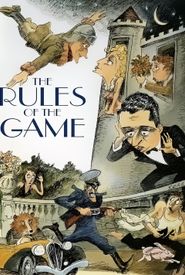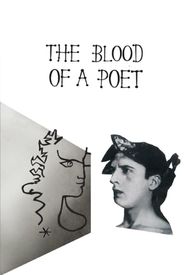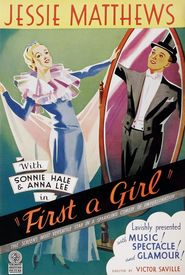Gabriel Bonheur Chanel, an individual of considerable renown, popularly referred to as Coco Chanel, was born in the year 1883. Following the untimely demise of her mother at the tender age of twelve, Chanel's father, in a shocking display of abandonment, left her and her siblings to fend for themselves in the largest orphanage of the region, a convent situated in the picturesque town of Aubazine. It was at the age of twenty-five that Chanel embarked upon a career as a shop girl, working for a local milliner, where she had the good fortune of meeting and subsequently commencing a romantic relationship with her first love, the charming Étienne Balsan.
As Chanel's fascination with the world of fashion continued to grow, she found herself increasingly drawn to the art of millinery, and it wasn't long before she began experimenting with the creation of elaborate and innovative hats, expertly crafting intricate designs from simple straw and felt materials that would soon captivate the eyes of fashionable women attending high-society horse racing events.
As her reputation as a talented milliner began to spread, Chanel's exceptional skill and creativity soon found themselves in high demand, with women from all walks of life clamoring to have her design custom hats that would perfectly complement their stylish afternoon outfits, and it was this unwavering dedication to her craft that would ultimately lay the foundation for her future success in the world of haute couture.
Coco Chanel
Between the years 1912 and 1914, the pioneering entrepreneur, Coco Chanel, embarked on a venture that would lay the foundation for her future success, opening not one, but two millinery stores, aptly named "Chanel Modes", in the esteemed cities of Paris and Deauville.
Within the walls of these establishments, Chanel showcased her creative genius by offering an assortment of stylish and practical items, including exquisite hats, simple yet elegant loose blouses, and delicate chemises.
The financial backing required to fuel this ambitious endeavor came from her charismatic and supportive lover, "Boy" Capel, who not only provided the necessary funding but also lent his endorsement to Chanel's innovative ideas, offering words of encouragement that helped to propel her towards achieving her goals.
Notably, in the year 1916, the renowned fashion designer, Coco Chanel, embarked on a pioneering journey by crafting garments from jersey, a fabric that was previously relegated to the realm of intimate apparel. This innovative move marked a significant departure from the conventional fashion norms of the time, as Chanel's designs boldly eliminated the need for corsets, those restrictive undergarments that had long constrained women's movements and styles.
By ingeniously reducing the number of linings in her creations, Chanel's garments became not only more comfortable but also significantly lighter and less rigid, allowing women to enjoy greater freedom of movement and a sense of liberation from the constraints of traditional fashion. By 1918, Chanel's innovative designs had evolved to include cardigans and twinsets, those iconic combinations of garments that have since become a staple of women's fashion.
Moreover, Chanel's creative genius extended to her adaptation of men's sweaters, which she skillfully transformed into stylish and wearable pieces that could be paired with plain, straight skirts. This bold move not only challenged traditional notions of gender-specific fashion but also paved the way for a more androgynous approach to style, one that continues to influence fashion designers and trendsetters to this day.
Coco Chanel's remarkable journey, marked by her innovative use of jersey fabric and her bold challenge to traditional fashion norms, serves as a testament to her unwavering commitment to empowering women through fashion and her unrelenting pursuit of creative excellence.
The 1920s marked a pivotal era for the renowned French fashion designer, Coco Chanel, as she revolutionized women's fashion by introducing a novel concept - wide-legged trousers, inspired by the iconic sailor's bell bottoms, which she affectionately referred to as "yachting pants". This groundbreaking innovation not only redefined the boundaries of feminine attire but also reflected Chanel's innate ability to reimagine traditional menswear for women, thereby empowering them to adopt a more androgynous and liberated approach to fashion.
Chanel's influence extended far beyond the realm of trousers, as she also popularized the now-iconic "little black dress", a versatile and timeless design that has endured for generations. Moreover, she consistently wore her own designs, which were characterized by a distinctive blend of simplicity, elegance, and practicality. Her wardrobe staples included belted raincoats, plain opened-neck shirts, blazers, cardigans, trousers, and soft berets, all of which were cleverly adapted from traditional menswear to create a unique and sophisticated feminine aesthetic.
Notable innovations of the esteemed Coco Chanel during this pivotal period in her illustrious career included the introduction of oversized flat black bows, which added a touch of sophistication to her designs. Additionally, Chanel's penchant for opulence was evident in her incorporation of gilt buttons on blazers, which not only added a dash of glamour but also served as a testament to her attention to detail. Furthermore, her designs also featured sling-back sandals, a style that would go on to become a staple in many a fashion enthusiast's wardrobe.
The 1930s marked a pivotal era in the illustrious career of the renowned French fashion designer, Coco Chanel, as she embarked upon a creative partnership with the esteemed jeweler, Fulco Di Verdura, to craft exquisite costume jewelry pieces featuring an array of fake and semi-precious stones meticulously set within lavish, eye-catching designs.
Meanwhile, in the preceding decade of the 1920s, Chanel introduced her groundbreaking and enduringly popular perfume, Chanel No. 5, a fragrance that would go on to become an iconic symbol of elegance and sophistication, forever changing the landscape of the perfume industry and cementing Chanel's status as a visionary entrepreneur and innovator in the world of fashion.
Around 1923, Chanel's distinctive fashion aesthetic reached its pinnacle in the "garconne look", a revolutionary style that emphasized the slender, flat-chested figure, effortlessly draped in loose, comfortable attire, and adorned with a boyish, short haircut that defied conventional femininity. This avant-garde approach to fashion not only redefined the boundaries of women's style but also paved the way for a new era of liberation and empowerment.
**Biography of Coco Chanel**
Gabrielle Bonheur "Coco" Chanel was born on August 19, 1883, in Saumur, France. She grew up in a poorhouse and was sent to an orphanage at the age of six. Chanel's early life was marked by hardship and struggle, but she found solace in music and began singing in local cabarets as a teenager. In 1908, she opened her first hat shop on the Rue Cambon in Paris, which eventually led to the establishment of her renowned fashion house.
Chanel's entrepreneurial spirit and innovative designs quickly gained recognition, and she became a prominent figure in Parisian society. Her iconic designs, including the little black dress and the Chanel suit, revolutionized women's fashion and continue to influence designers to this day.
Coco Chanel, the renowned French fashion designer, entrepreneur, and founder of the iconic House of Chanel, made the poignant decision to close her esteemed salon in 1939, coinciding with the outbreak of World War II. This marked a significant hiatus, as Chanel did not reopen her salon until 1954, when she was a spry seventy-one years young.
Throughout her remarkable career, Chanel continued to wield her influence over the world of haute couture until her passing in 1971, at the ripe age of eighty-eight. Her legacy, however, lived on, and in 1983, the inimitable Karl Lagerfeld took the reins as design director of the House of Chanel, ushering in a new era of creative excellence and innovation.

















